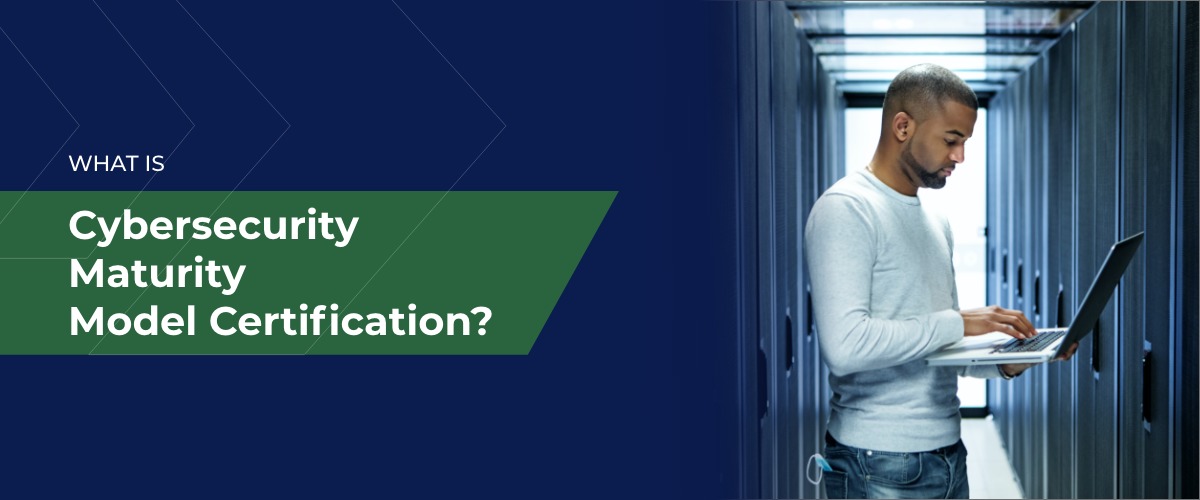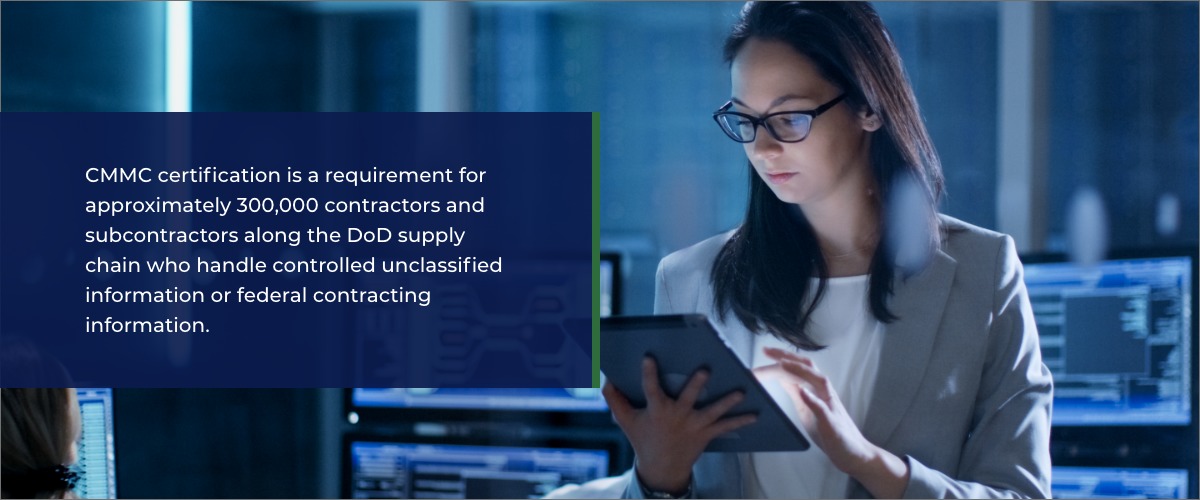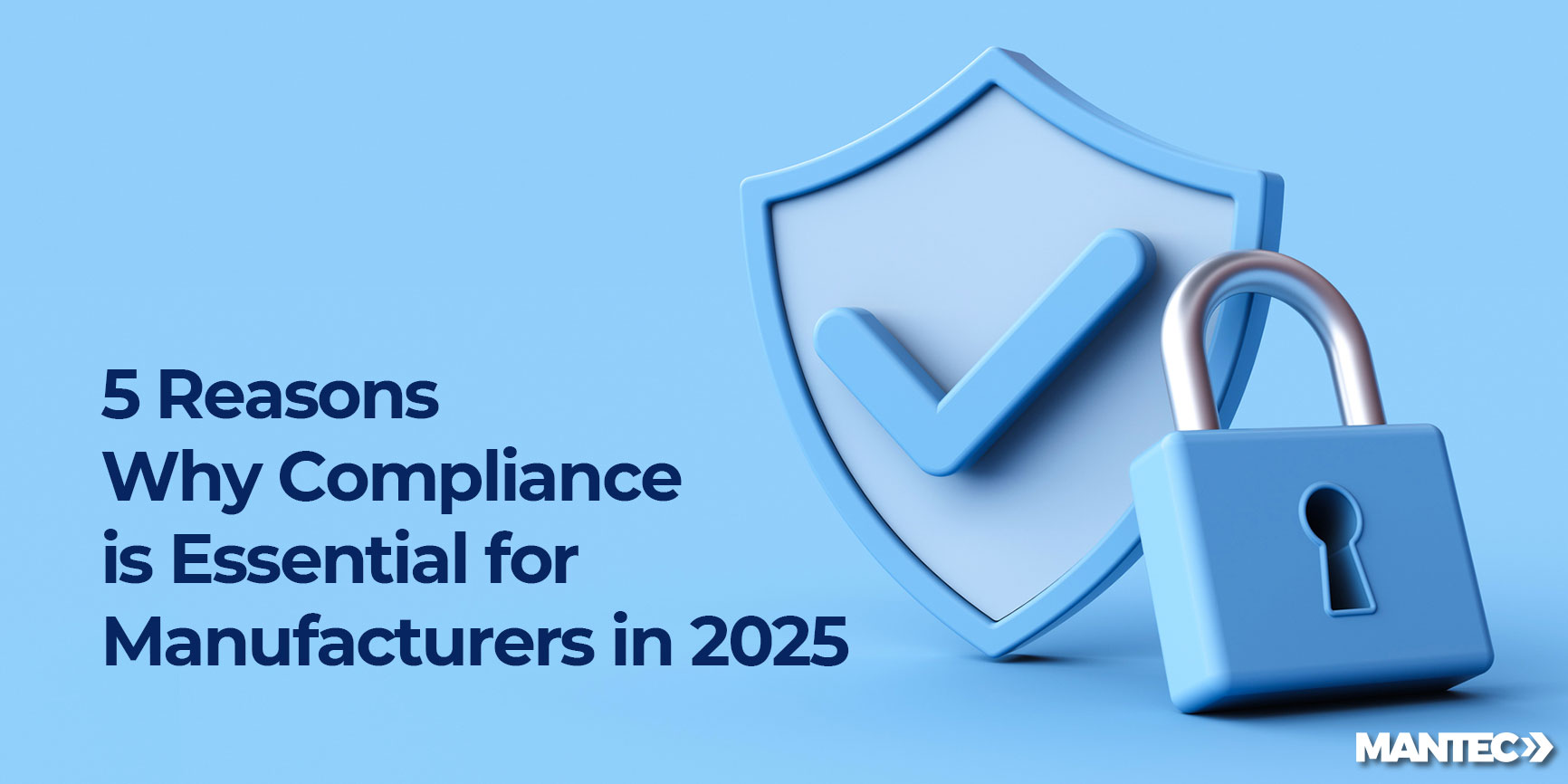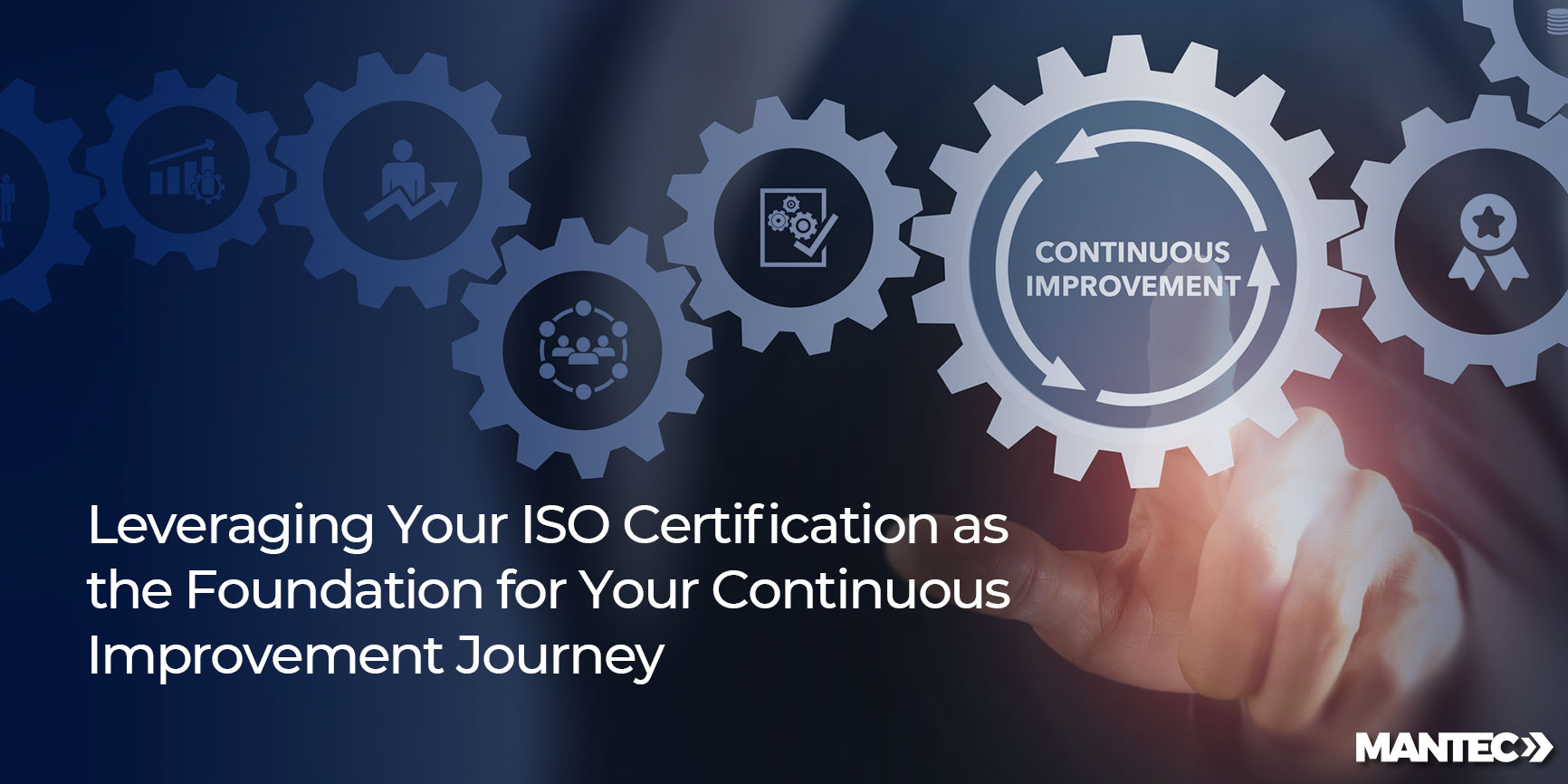In the fast-paced world of manufacturing, staying ahead often means embracing change. Soon, the only…

The United States Department of Defense (DoD) created the cybersecurity maturity model certification (CMMC) to ensure all contractors who work with sensitive data have the essential training to handle this information and minimize cybersecurity risks. CMCC’s overall goal is to identify, assess and protect against digital threats to the DoD’s network.
While the DoD has various security protocols and perimeter defenses, many contractors and subcontractors have access to sensitive information. If these organizations experience a data breach, it can have costly and damaging effects on the nation’s security. View our CMMC compliance checklist and learn how to get CMMC certified.
Understanding CMMC
CMMC is a security framework aimed to assess contractors’ resilience and capability. It helps minimize supply chain vulnerabilities, enhance overall technology practices and lessen the damaging effects of intellectual data breaches.
The CMMC features four foundational elements, including security domains, control practices, processes and capabilities, reducing the risk for the DoD. Because the DoD works with various contractors and subcontractors, numerous entities possess its information. Any level of a data breach within government software development can be catastrophic, leading to security risks and sensitive data breaches.
Researchers have found there are approximately 2,200 cyberattacks every day, and that number continues growing. Even a minor data breach can be disastrous for our nation’s overall security. Because DoD contractors have different levels of access to information, the DoD created the cybersecurity maturity model certification with a tiered approach. Contractors need to satisfy security testing requirements related to the proposed contracts.
What Is CMMC Compliance?
CMMC’s overall goal is to protect controlled unclassified information (CUI) throughout the DoD supply chain. CUI is any data or information created or used by the government or another organization working on its behalf. Because this definition is quite broad, it covers several categories, including legal, financial, infrastructure, intelligence, export controls and other relevant data.
The overall CMMC requirements vary depending on an organization’s certification level, as determined by the tier of information they need when working for or on behalf of the DoD. While each certification level has unique requirements, each level builds on the one beneath it, meaning level 3 must also satisfy levels 1 and 2.
In November 2021, the DoD updated CMMC 1.0 with new regulations and released CMMC 2.0. These regulations have changed various aspects of CMMC compliance, notably changing the overall levels of certification from five (CMMC 1.0) to three (CMMC 2.0). With the introduction of CMMC 2.0, the DoD plans to award a contract with a Plan of Actions and Milestones (POAM) to complete CMMC requirements.
Several mandatory controls are necessary for the award, and additional controls must be understood and addressed according to a clearly defined timeline.
Cybersecurity Maturity Model Levels
For each cybersecurity maturity model, a contractor or subcontractor must satisfy a CMMC compliance checklist. One of the most crucial steps to prepare for certification is understanding the CMMC’s technical aspects and requirements. Contractors must also have a firm grasp of long-term cybersecurity best practices and agility to evolve in an ever-changing industry.
Once a contractor understands the fundamental requirements for the level of certification they are looking to achieve, they can begin their journey by documenting all procedures that already adhere to CMMC requirements. Noting which practices are not up to CMMC standards can help you identify areas for improvement.
You will also want to plan for implementing other practices and procedures to satisfy and obtain the highest level of cybersecurity certification. There are three levels of certification, ranging from 1 to 3.
- Level 1: The DoD defines level 1 certification as basic cyber hygiene. Contractors looking to work with the DoD must pass an audit and implement the 17 controls of NIST 800-171 Rev. 1. Level 1 is designed for organizations solely working with federal contract information. This foundational level aims to engage contractors and encourage them to develop and hone their cybersecurity skills. Level 1 will be achievable with an annual self-assessment.
- Level 2: Level 2 certification requires an understanding of 110 controls of NIST 800-171. Level 2 certification is split based on the criticality of the organization’s information. Organizations working with CUI as Critical National Security Information will need to undergo a third-party assessment every three years. Select organizations may be able to perform a self-assessment for these controls each year.
- Level 3: Currently, the regulations surrounding CMMC 2.0 level 3 remain under development, but the base parameters will require more than 110 practices from NIST 800-172. At level 3, the government will complete the assessment every three years rather than CMMC third-party assessment organizations (C3PAOs).

Who Needs CMMC Certification?
CMMC certification is a requirement for approximately 300,000 contractors and subcontractors along the DoD supply chain who handle controlled unclassified information or federal contracting information. CMMC certification will affect suppliers of all tiers of the Defense Industrial Base (DIB), including foreign suppliers and small- to medium-sized enterprises.
CMMC certification is a prerequisite for any entity currently working with or aiming to start working with the DoD. Because all defense contractors and subcontractors handle sensitive data and information, they must earn CMMC certification. Another relevant consideration is the cost of preparing and achieving CMMC certification, which varies depending on various factors.
One factor that may influence the cost of CMMC certification is the organization’s existing cybersecurity level. Other crucial aspects to consider include the organization’s size and complexity, the volume of sensitive data handled and any service outsourcing involved in preparing for the assessment.
With CMMC 2.0, annual self-assessments are now allowed with a yearly affirmation by DIB company leadership for those holding CMMC Level 1 certification. Annual self-assessments are ideal for organizations that only work with federal contact information, easing the assessment cost and burden for organizations that do not work with controlled unclassified information.
Benefits of CMMC Certification
A primary benefit of obtaining CMMC certification is improving various processes and increasing the protection and management of controlled unclassified information and sensitive data within the United States Defense Industrial Base supply chain. CMMC certification can reduce the damaging effects of cybercrime and data breaches.
Additionally, CMMC certification allows organizations to prepare for, detect and recover from potential cyberattacks, thus minimizing financial penalization. CMMC certification also helps maximize the DoD’s and DIB’s cybersecurity measures. Adopting cybersecurity best practices and CMMC improves overall cyber hygiene.

Advancing Your Manufacturing Business Together
MANTEC is a nonprofit manufacturing service provider helping to meet and exceed the needs of small and midsized manufacturing enterprises. We offer numerous client services, including sales and marketing, process improvement, manufacturing technology and workforce engagement. We draw upon a talented team of solution providers in support of our manufacturing clients.
Founded in 1988 by the Pennsylvania General Assembly, MANTEC supports manufacturers with various resources, allowing them to remain competitive and profitable in local, national and global economies. We play a vital role in helping our clients assess and improve various aspects of manufacturing for short- and long-term success.
View our solutions and contact us online today or call 717-843-5054 to learn more.


